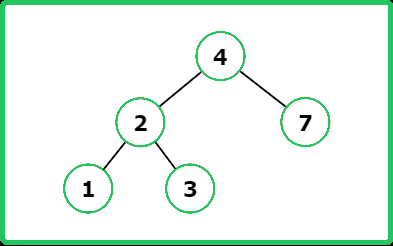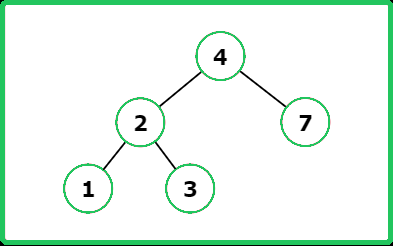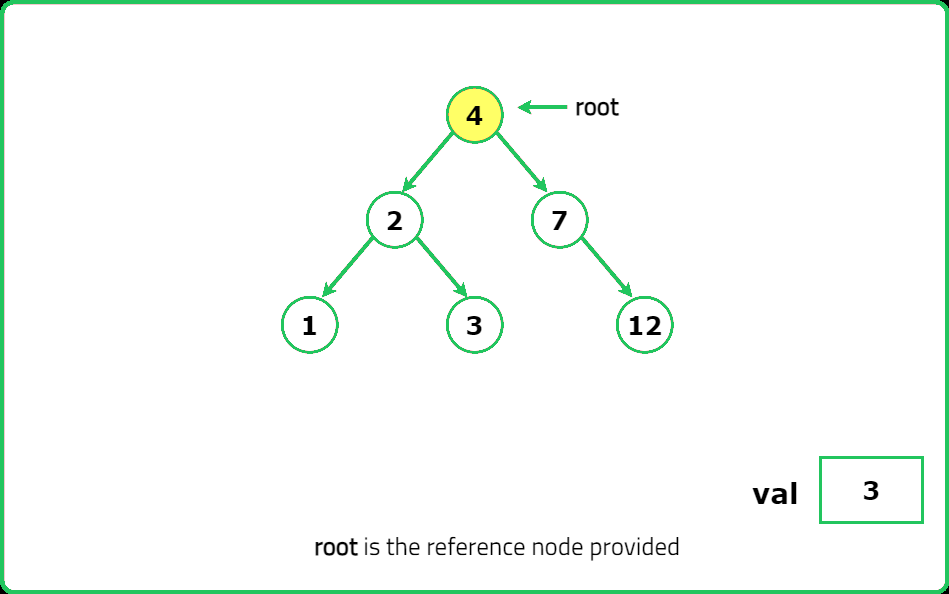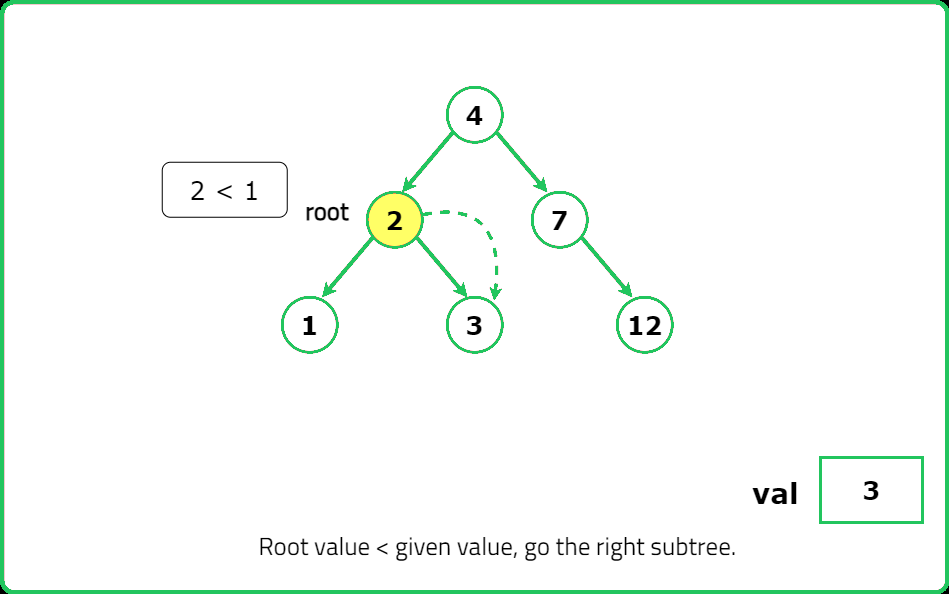Search in BST
Binary Search Trees
Theory and Basics
Easy
- Searching for a specific node in a binary search tree (BST) is a fundamental function that underlies many real-world applications, including database management systems and search engines
- These systems often use a form of BST known as a B-tree
- When you perform a Google search or a SQL query, these systems are using a version of the search operation defined in this problem to efficiently find relevant records among possibly billions
- This is because BST allow for efficient lookups, additions, and deletions, which are key operations for these systems
Given the root of a binary search tree (BST) and an integer val.
Find the node in the BST that the node's value equals val and return the subtree rooted with that node. If such a node does not exist, return null.
Examples:
Input : root = [4, 2, 7, 1, 3] , val = 2
Output : [2, 1, 3]
Explanation :

Input : root = [4, 2, 7, 1, 3] , val = 5
Output : []
Explanation :

Input : root = [10, 2, 12, 1, 4, null, null, null, null, 3] , val = 2
Constraints
- 1 <= Number of Nodes <= 5000
- 1 <= Node.val <= 107
- 1 <= val <= 107
- All nodes values in BST are unique.
Hints
- If val == root.val, return the subtree rooted at this node. If val < root.val, recursively search in the left subtree. If val > root.val, recursively search in the right subtree.
- If val matches the current node, return it. If val < root.val, move to the left subtree. If val > root.val, move to the right subtree. If null is reached, return null (value not found).
Company Tags
Visa
Bain & Company
Salesforce
GE Healthcare
Byju's
Alibaba
Lyft
eBay
Databricks
Siemens Healthineers
Splunk
IBM
Mastercard
Etsy
Roblox
Epic Games
PayPal
PwC
Docker
Zomato
Dropbox
Twilio
Johnson & Johnson
AMD
OYO Rooms
Google
Microsoft
Amazon
Meta
Apple
Netflix
Adobe



